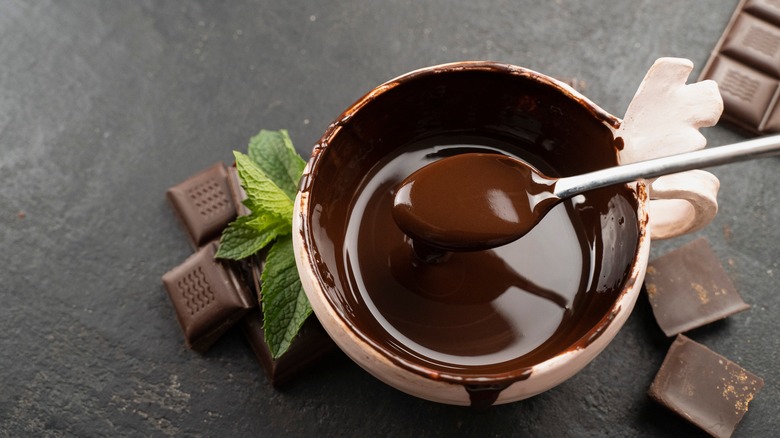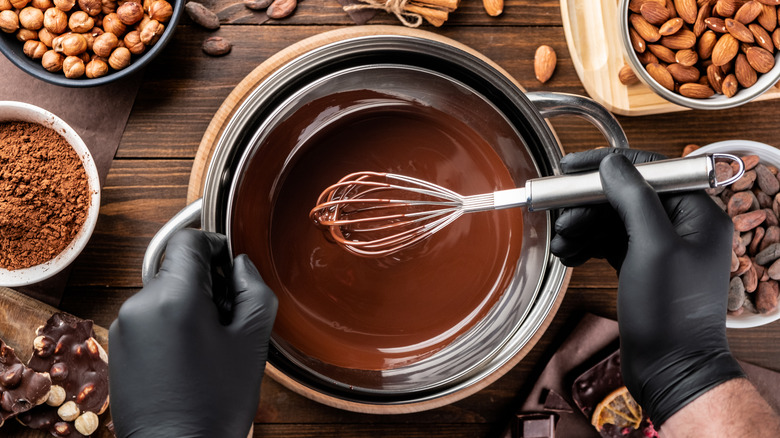Is There A Way To Fix Seized Chocolate?
Melting chocolate can cause moments of anxiety, simply because it doesn't appear to take much for chocolate to go from molten, shimmery, and shining, to grainy, dull, and unyielding. It is especially unfortunate that this change happens rather quickly and dramatically — usually thanks to a drop or two of moisture, which somehow has managed to make its way into the pot in a transformation known as "seizing."
Seizing happens because of the composition of melted chocolate, which Cooks Illustrated describes as a mixture of cocoa powder, cocoa butter, and sugar, which are then evenly separated when it melts. But when any kind of moisture is introduced into the mix — and it doesn't matter if the liquid is water, flavoring, or a liqueur — the liquid and the sugar bond together to create lumps. As food scientist Harold McGee explains per The Kitchn, "the small amount of water acts as a kind of glue, wetting the many millions of sugar and cocoa particles just enough to make patches of syrup that stick the particles together...", hence the rough, gritty texture.
Seized chocolate can be revived by adding liquid
The moment our chocolate seizes is probably the point where some of us would give up and start with a new batch of chocolate, which would be the right thing to do if, as Cook's Illustrated points out, the chocolate is being melted for baking. It would also be unusable if you had been planning to use that melted chocolate to coat fruits or sweets, per Food52.
But this doesn't mean the chocolate needs to be thrown out. After all, seized chocolate can be revived for later use with a little of the liquid that was added to it — a tablespoon at a time of water, liqueur, or melted butter. However, because that fix changes the texture of the melted chocolate, the resulting chocolate is best used to make chocolate sauces or chocolate drizzle.
The one road to ruining chocolate beyond redemption is to overheat it for an extended period of time, per The Spruce Eats. Because it doesn't take much to melt chocolate, it shouldn't be heated past 120 F if the chocolate is dark, and 110 degrees Fahrenheit if the chocolate is milk or white. But if the chocolate does get overheated, cool the chocolate by taking it off the heat, add a handful of solid chocolate chunks, and keep stirring to cool the mixture down. The Spruce Eats is a fan of adding vegetable oil or shortening to revive seized chocolate, but Food52 disagrees.

